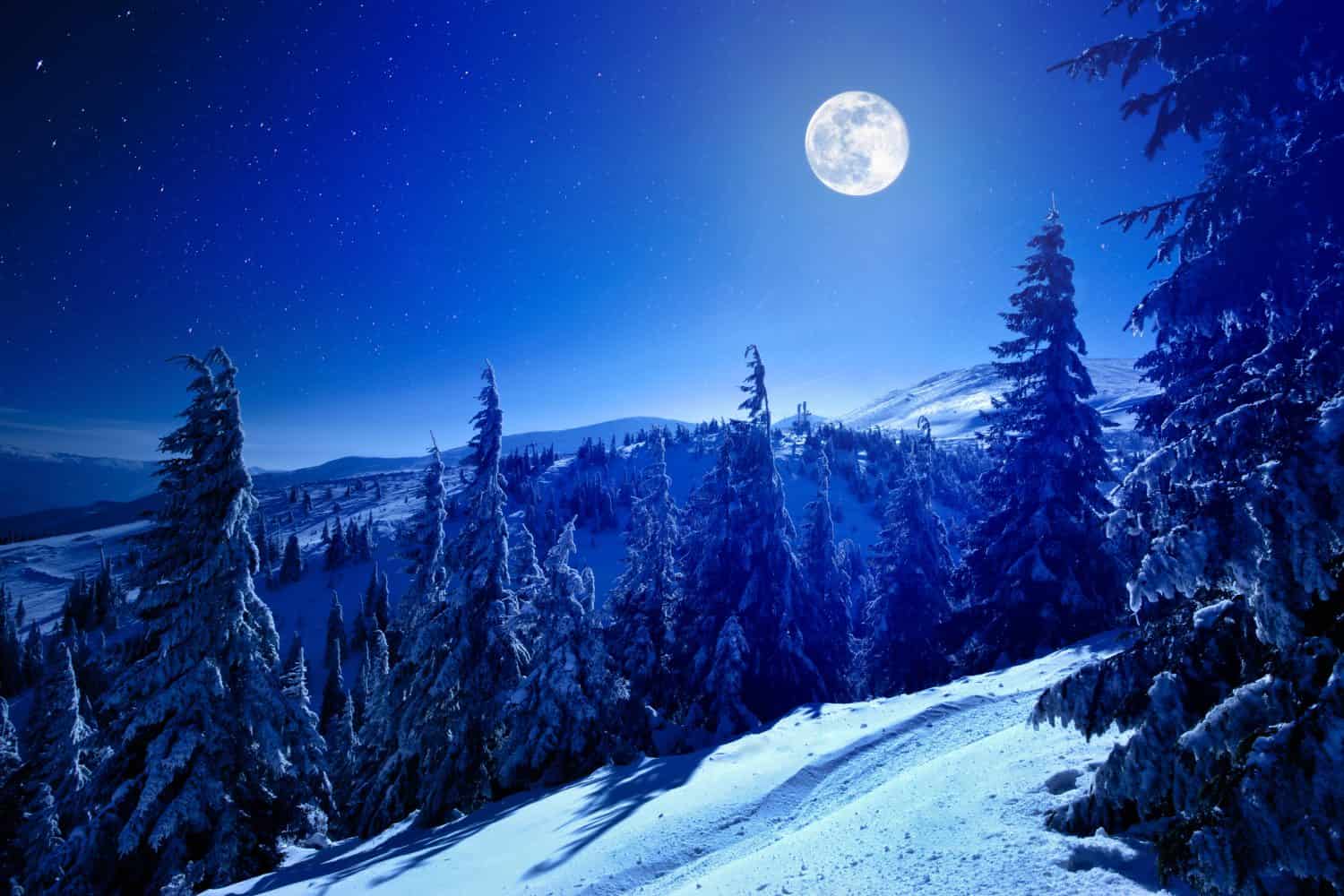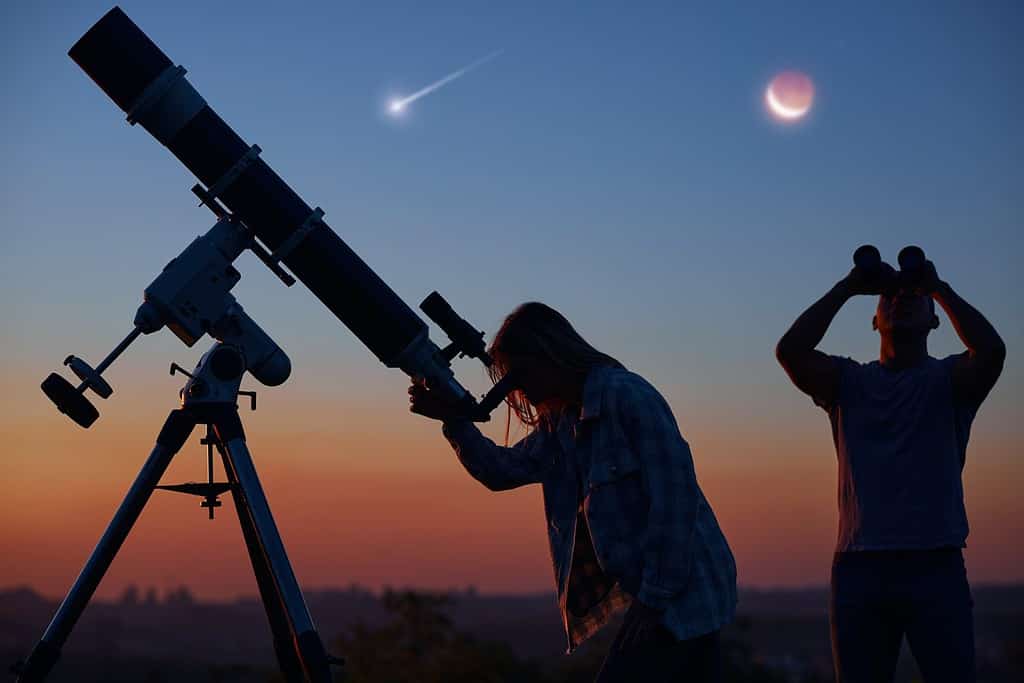Stargazers have watched the moon and the skies around it for generations. The December full moon occurs right after the winter solstice and after the Geminid meteor shower’s peak. Read on for more about the Cold Moon and its significance.
Introduction: Exploring the Fascinating World of Full Moons and Their Significance
Our moon is over one-quarter the size of Earth. It is one of the largest moons in the solar system, coming in fifth after Ganymede, Titan, Callisto, and Io. The gravitational force it generates creates the ocean’s tides and settles the atmosphere, so the Earth habitable.
The moon’s face intrigues all people, from astronomers to children looking up at the sky — just as it has for millennia. Its silvery light illuminates the night landscape, giving rise to myths and legends. This December, the full moon occurs at 7:33 P.M. on December 26, and it will appear full for a couple of days before and after the official full moon.
Let’s explore the Cold Moon, its cultural significance, symbolism, and rituals associated with the moon that often falls near the Winter Solstice.
Origin of the Cold Moon: The Cultural and Historical Origins of the Name

The Cold Moon occurs around the same time as the winter solstice.
©YouraPechkin/Shutterstock.com
Each full moon of the year has a different name. Some are similar and some are quite different. For December’s full moon, names often refer to winter, cold, or snow.
Naming full moons throughout the year was a way for people to remind themselves what to expect during that time of year — and prepare for the next season. For example, if you know the Beaver Moon (November) is before the Cold Moon (December), you’ll remember to get ready for winter before the beavers finish tucking themselves in for the winter.
Different cultures used different naming systems and counted different numbers of full moons each year. Some recognized 13 full moons per year, while others only counted 12.
However, the naming isn’t always simple. Some tribes called the December full moon the Wolf Moon, but others reserved that name for January’s moon.
Names depended on where the cultures lived and what their weather conditions tended towards at those times of the year.
These days, the most common name for the December full moon is the Cold Moon — which we get from the Mohawk people. It refers to that time when winter’s cold tightens its grip.
The Mohawk people were a member of the Iroquois nation. The easternmost tribe of the Iroquois Nation suffered through particularly harsh winters. Calling a full moon that also fell near the longest night of the year the Cold Moon made sense.
| Name | Origin |
|---|---|
| Long Nights Moon | Cree; reflects the moon’s timing that coincides with the solstice. |
| Moon before Yule | Ancient Germanic, Norse; also solstice-related |
| Hoar Frost Moon | Cree; reflects how frost covers the trees. |
| Moon of the Popping Trees | Oglala; refers to the sounds trees make when they crack in freezing temperatures. |
| Snow Moon | Haida & Cherokee |
Lunar Traditions and Beliefs: Understanding the Symbolic Meanings and Interpretations Associated with the Cold Moon
The Cold Moon’s symbolism isn’t subtle. During the winter, everything rests — even the wolves hunker down on the coldest days.
The days surrounding the Cold moon are perfect for reflection and meditation. Take some time to reflect on the previous year’s successes and failures. Then, make time to clear out the old and make room for newer, bigger things.
It’s also a great time to slow down and bask in the joy of simple pleasures. Social events with family and friends, and sharing food and drink around the table help strengthen connections.
Astronomical Phenomena: Examining Any Unique Astronomical Events or Features Associated with the Cold Moon

If you love meteor showers, you’ll be thrilled to discover that one of the best meteor showers of the entire year.
©AstroStar/Shutterstock.com
The Geminid meteor shower is one of few that isn’t caused by a comet, but instead by something else. However, what that “something else” is, no one is quite certain.
According to NASA, 3200 Phaethon is unusual, and astronomers struggle to define it. It could be a new kind of object called a “rock comet,” or simply a dead comet. Until they figure it out, NASA will continue to classify it as an asteroid.
In 2023, the Geminids will light up the sky from November 19 to December 24, peaking around December 14. During the peak activity, you could see 120 meteors streaking through the sky every hour. However, that’s assuming your skies will be clear.
Celebration and Rituals: Exploring the Various Ways Different Cultures Celebrate and Honor the Cold Moon
Because the winter was harsh and difficult for many cultures, they created traditions that helped them survive. Cold Moon traditions vary from one culture to the next, but its proximity to the solstice means the Cold Moon often shares some of the honors.
Immediately after the solstice and the Cold Moon, the days begin lengthening again. Since many cultures used the full moon as a calendar, they knew when the longest nights occurred and celebrated the sun’s return.
- The Celts honored the sun god’s return during Yule and at the Cold Moon. And, because long winter nights can be frightening and especially cold, many cultures also lit up the night.
- Winter was especially difficult for people. All the harvests were finished, and some supplies were getting low. So, families and communities gathered together to pool their resources. During gatherings, they told stories and shared warmth, which served as a reminder of how important community is to survival.
The photo featured at the top of this post is © Fernando Astasio Avila/Shutterstock.com
Thank you for reading! Have some feedback for us? Contact the AZ Animals editorial team.







